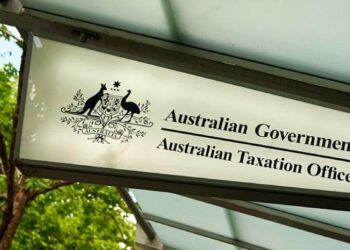The government recently released a new position paper on the retirement income covenant intended to further develop retirement outcomes in Australia’s superannuation framework and address the findings from the Retirement Income Review.
In a recent submission to the Treasury, Townsends Business & Corporate Lawyers said that the implementation of the retirement income convenant may not be a good fit in the context of SMSFs and may instead lead to increased costs.
The firm said the proposed RI covenant will impose a duty on SMSF trustees to develop and document their strategy to assist retirement or near-retirement aged members to achieve and balance three objectives; namely, to maximise their retirement income; to manage risks to the sustainability and stability of their retirement income; and to have some flexibility to access super savings during their retirement.
Furthermore, underlying this covenant is the aim to make changes to income streams processes such as minimising death benefits transferring to non-spouse dependents or to the estate of the deceased member. The firm noted that such measures undermine the policy or objective of superannuation and reduce the level of retirement income which could have otherwise been enjoyed by the deceased member.
“Our principal objections to the proposed RI covenant applying to SMSFs are the RI covenant will not generate any practical benefit to SMSF members and the RI covenant will simply generate considerable fund expense for SMSF members, thereby undermining the stated objective of the covenant,” Townsends Business & Corporate Lawyers executive consultant Michael Hallinan said.
“SMSFs will have no ability to spread the cost of the research, design and implementation of the RI covenant over a considerable number of members. There is simply no scale in the SMSF context for the expense to be a reasonable imposition on each member’s retirement savings.
“Compliance with the RI covenant will also be formalistic at best and the regulator will be required to challenge the performance of the RI covenant which will be beyond the regulator’s resources and skills.”
As the covenant seeks to place focus on maximising retirement income, the only retirement income stream product which can be issued by SMSFs are account-based pensions, according to Mr Hallinan. The only means of increasing retirement income “is to dial up the pace of capital consumption or the adoption of investment strategies involving greater investment returns at the cost of higher increased investment risk”.
“There is no scope for augmenting pension capital by the trustee issuing some form of pooled income stream product — as the membership base of SMSFs is too small for pooled products (even if the regulatory regime permitted such products to be issued by SMSFs),” he noted.
“In practice, pooled retirement stream products are a form of tontine — where pension capital is transferred from lives which drop short to those which survive.”
In the covenant, there is also a focus on sustainability for the fund which is used to mean that the retirement income is reliable and durable over time with particular reference to longevity risk, investment risk and selection risk.
As pooled retirement income products cannot be issued by SMSFs, Mr Hallinan noted longevity risk can only be managed by moderating the pension drawdown rate, and investment risk can only be moderated by a weighting towards defensive assets as against growth assets.
Furthermore, the selection risk can only be moderated by having a cash component sufficient to support one or two years’ pension payments.
“The member could purchase, from a third party, a lifetime income stream (whether pension or annuity). However, this is a decision best left to the individual member and their willingness to accept the significant capital cost of such guarantees,” Mr Hallinan explained.
“It should also be noted that the current regulatory design features of account-based pensions are at cross purposes with the sustainability and stability goal set out in the paper and, also, the retirement consumption pattern noted in the Retirement Income Review.
“The age-related and increasing minimum drawdown requirement undermines management of the longevity risk and the requirement to make pension payments in cash rather in-specie asset transfers increases both investment and selection risks.
“Furthermore, as account-based pensions permit the member to access all or part of the pension account balance by means of either commutation or large pension drawdown, the objective to provide flexibility to access savings can be currently achieved by SMSFs.”
Implementation not matching the context of SMSFs
In the submission paper, the firm also noted that there are significant features of SMSFs that should be considered in relation to the application of the RI covenant. This includes the self-management aspects, operation on a cost-only basis and no retained earnings.
There are also features such as the small membership base, and restrictions on the types of retirement income products that can be issued that need to be considered when factoring the retirement income covenant.
In terms of self-management, Mr Hallinan said that, in general, each member must participate in the management of the fund by being a trustee (or a director of the corporate trustee entity) and each trustee (or director of the corporate trustee entity) must be a member.
“While it is possible to have child members of an SMSF, this is extremely rare. As the ATO has not published data on the child membership, it cannot be stated with certainty,” he said in the submission.
“However, as less than 0.5 per cent of the total SMSF membership is aged less than 25, the total SMSF membership aged less than 18 is likely to be considerably smaller than the 0.5 per cent figure.”
The second significant feature is SMSFs also operate on and are required by the Superannuation Industry (Supervision) Act 1993 (SIS Act) to operate on a cost-only basis. Mr Hallinan noted the RI covenant needs to consider all expenses of the operation of the SMSF are borne by the members either directly (such as the cost of tax arising from the receipt of deductible contributions) or indirectly (for example, tax costs arising from investment earnings, audit fees, accounting fees and legal fees).
“The third significant feature is that the vast majority of SMSFs have neither retained earnings nor assets not directly supporting member interests,” he said.
“A very small number of SMSFs may have defined benefit pensions still in payment or may be still attempting to operate (despite the ATO’s publicly stated position about reserves) investment reserves or contingency reserves.
“In general, all net contributions and net investment earnings are allocated directly to the members and constitute benefit liabilities of the SMSF.”
The RI covenant will also need to consider the small membership base of SMSFs, as over 90 per cent of SMSFs have two members or less.
“The most recent ATO statistics indicate that 23.5 per cent of all SMSFs are single-member funds, 69.5 per cent of all SMSFs are two-member funds and the balance are three-member funds (3.4 per cent) and four-member funds (3.6 per cent). In short, more than 93 per cent of SMSFs have two members or less,” he explained.
“In our experience, two-member funds generally tend to consist of a spouse couple, and three and four-member funds tend to consist of parents and their child or children.”
The final significant feature is that SMSFs can only issue income stream products which are in the form of account-based pensions, according to Mr Hallinan. In particular, the SMSF cannot issue defined benefit products (such as income streams to which Superannuation Industry (Superannuation) Regulation 1.06A applies; namely, “innovative superannuation income streams”, as these income streams must be payable throughout the life of the beneficiary (primary or reversionary)).
“For completeness, it should be noted that legacy defined benefit income streams and legacy market-linked income streams can be provided by an SMSF if the former were issued before 2006 and if the latter were first issued before 20 September 2007,” he explained.
“Additionally, SMSFs can issue market-linked income streams on or after 20 September 2007 if the purchase price for the income stream can be traced to a defined benefit pension or market-linked income stream which commenced before 20 September 2007.”



Correct, for SMSFs it will just add extra costs, or everyone will get a similar low cost generic covenant that will add no value.
And if the ‘work around’ becomes that SMSFs are required to purchase a CIPRs as they are not able to manufacture in-house, do we have the potential for these to become as problematic as the legacy pension products that were issued prior to 2007? We are 14 years post the last time defined benefit pensions were able to be issued by a SMSFs and the membership is also 14 years older. For some, they are trapped in the SMSF as the portability options are very limited. Could we end up with CIPRs trapping older member into a SMSF?
The solution is not the recent extension of maximum SMSF membership to 6. Assuming that parents and/or their children, for example, wish to run a SMSF together is a big assumption and adding in the potential for older member exit restrictions to add an emotional element, is simply a reduction in flexibility, not the extension.
It seems the policy proposition is 2-prong. Trying to provide better retirement incomes for the lower balance superannuants in APRA funds on the one hand and, trying to limit super being a meaningful estate asset on the other (primarily the remit of SMSFs as the membership balances are generally larger). Talk about wanting to have and eat the cake at the same time.
And Tim Wilson wonders why there are monster industry funds? If you legislate for bureaucracy, you will get bureaucracy. Leave SMSFs alone and make it easier for people to exit monster funds.
Great presentation of the facts. However the govt has clearly demonstrated by its treatment of other issues in financial services that supporting institutions business models is a higher priority. This type of legislation will do exactly what is outlined and make smsf a more difficult solution and drive people back to institutions. Exactly what the govt seems to favour.